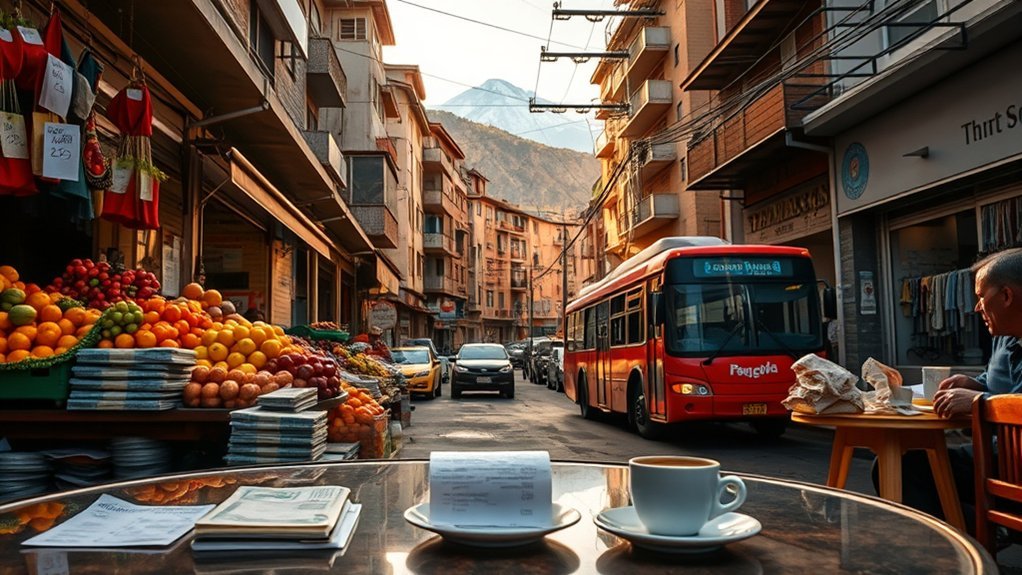You can live cheaply in Bolivia: expect about $700 a month as a single and roughly $1,550 for a retired couple, with one-bedroom rents typically $200–$500 and groceries $100–$300. Local buses cost $0.30–$1, taxis $2–$5, and meals range from $1 street snacks to $15–$30 at mid-range restaurants. Healthcare visits and private insurance are far cheaper than in many Western countries, and below you’ll find detailed line-item costs and saving tips.
Why Bolivia Is Attractive for Budget Travelers and Expats
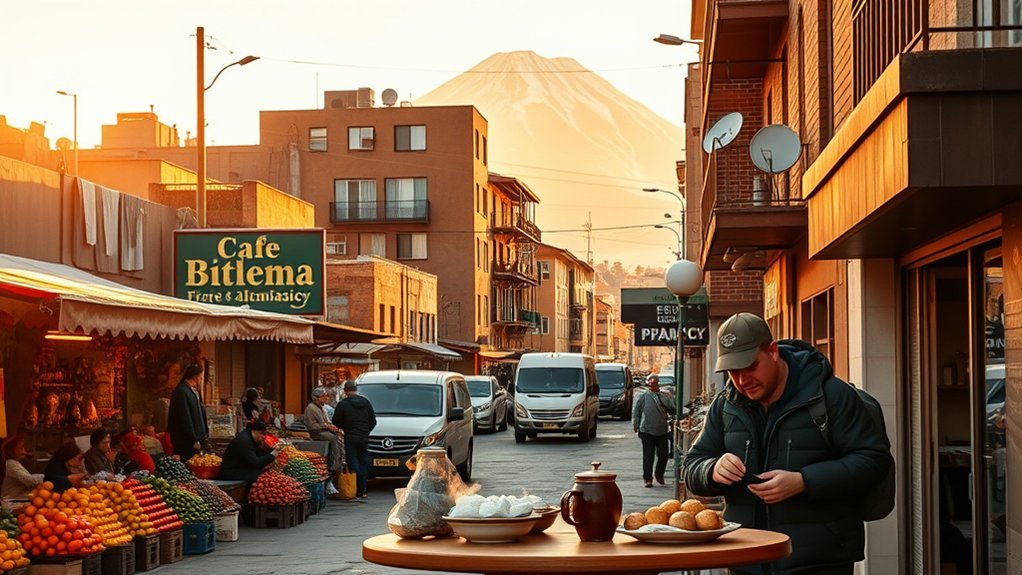
Because your dollar goes much further in Bolivia, you’ll find it easy to live well on a modest budget: a retired couple can maintain a comfortable lifestyle for around $1,550 per month.
One-bedroom rents in La Paz or Sucre sit between $200 and $500, and basic groceries for a single person typically run $100–$300 monthly.
When you compare these figures to Western cities, the cost of living advantage is clear: rent and food often cost a fraction of what you’d pay elsewhere.
You’ll appreciate low transport fares (roughly $0.30–$1) that let you move around without tapping savings, and eating out stays affordable—lunch averages about $3.44, dinner for two roughly $17.40—so social life won’t blow your budget.
Whether you’re a budget traveler or expat, these concrete numbers let you plan precisely, pick neighborhoods that match your spending priorities, and allocate savings toward health care, travel, or emergencies with confidence.
Monthly Cost Breakdown for Singles and Families
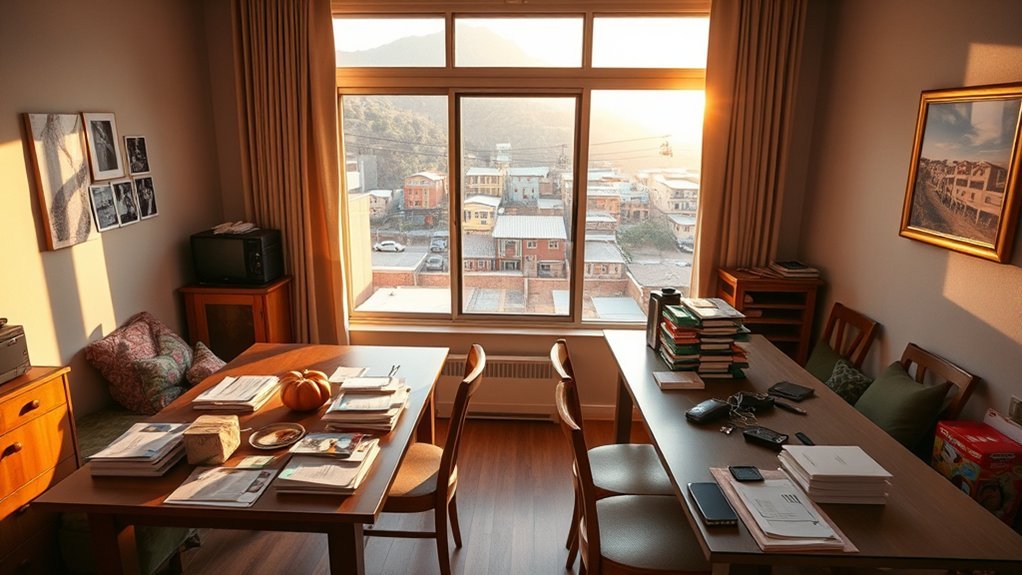
Having seen how far your dollar stretches in Bolivia, let’s break down what that looks like month to month for singles and families.
Having seen how far your dollar stretches in Bolivia, here’s a month-by-month cost snapshot for singles and families.
If you’re single, plan on roughly $708 monthly for living in Bolivia: food $100–$300 depending on groceries versus eating out, rent for a one-bedroom roughly $200–$500, transport minimal (bus rides ~$0.30, occasional fuel $50–$100), and utilities $20–$150.
For a family of four, expect about $1,543 monthly: food scales up substantially, often toward the higher end of that per-person range; rent moves higher if you need more space; transport and fuel rise moderately; utilities increase with usage.
Compared side-by-side, families pay roughly double singles for food and utilities combined, while transportation and housing vary by city.
Use these benchmarks to model your budget: prioritize groceries and utility usage to keep costs down, and expect city-to-city rent differences to be your largest variable when living in Bolivia.
Housing and Rental Prices in Major Cities
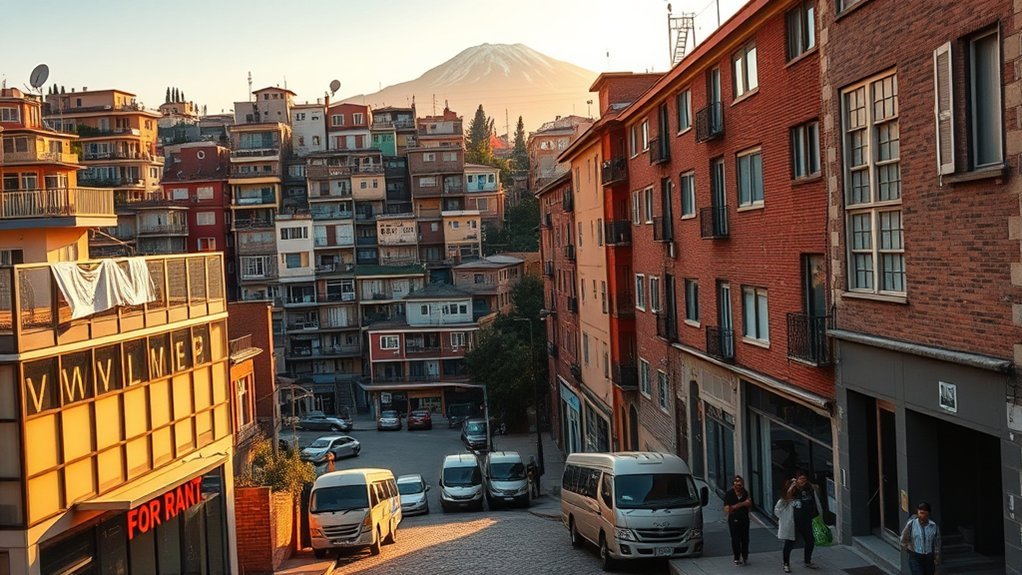
You’ll find one-bedroom rents in La Paz and Sucre typically sit around $300–$500 per month, while Santa Cruz runs higher at about $400–$700.
Expect furnished units—often pricier—to command a premium, especially short-term listings on platforms like Airbnb, whereas unfurnished long-term rentals usually let you negotiate lower monthly rates directly with landlords.
Compare neighborhoods closely, since central or upscale areas push prices well above the city averages.
Typical Rent Ranges
When comparing rents across Bolivia’s major cities, you’ll find one-bedroom apartments typically fall between roughly $229 at the low end and up to $700 in pricier urban areas.
You’ll see La Paz and Sucre clustering in a mid-range: expect about $300–$500 monthly for a standard one-bedroom, reflecting moderate living costs and central-location premiums.
Santa Cruz pushes the top end, with $400–$700 common in sought-after neighborhoods and newer buildings.
The $229 figure represents cheaper options—older units or peripheral locations—so you can reduce expenses by trading proximity for price.
Furnished vs. Unfurnished
Although furnished apartments save you the hassle of buying furniture, they typically cost more upfront: in La Paz and Sucre expect $300–$500 for a furnished one-bedroom versus slightly less for unfurnished units, while in Santa Cruz furnished options usually run $400–$700 and unfurnished units can be noticeably cheaper.
You’ll weigh monthly rent against moving and furnishing costs: a furnished one-bedroom apartment cuts initial expense and lets you move in immediately, useful for short-term stays or Airbnb changes.
For longer leases, unfurnished units let you amortize furniture purchases and lower monthly rent.
Always confirm whether utilities are included; in many Bolivian rentals they are, but exclusions can shift total cost.
Negotiate longer stays for discounts.
Food, Groceries, and Dining Out

You’ll find groceries in Bolivia are generally cheap if you shop local markets, with a single person spending about $100–$300 monthly.
Staples like milk at $1–2 per liter, bread $1–2 per loaf, and a dozen eggs $2–3.
Eating out is likewise affordable: street food can cost $1–2, a typical lunch menu runs about $3.44, fast food around $6.59, and mid-range restaurant meals $15–$30 (dinner for two about $17.40).
Compare those figures to your home country to judge whether food here will lower your overall living costs.
Grocery Prices and Staples
Expect to spend roughly $100–$300 a month on groceries in Bolivia, depending on whether you shop local markets or import specialty items.
Your grocery prices will be driven by choices: local staples like milk (1 litre) and a loaf of bread each run about $1–$2, while a dozen eggs costs roughly $2–$3, making eggs an economical protein source.
If you buy produce at mercados and cook at home, you’ll sit near the lower end of the range; buying imported cheeses, olive oil, or specialty coffee pushes you toward the top.
Compare supermarket chains with neighborhood markets for price and quality differences. Track unit prices (per kilo or per litre) to spot real savings and plan weekly shopping lists to control monthly food costs.
Eating Out Cost Ranges
When you eat out in Bolivia, meals are generally budget-friendly: a typical lunchtime menú costs about $3.44, while a mid-range dinner for two averages $17.40.
This means you can choose between inexpensive daily options and occasional restaurant meals without a big hit to your wallet. You’ll find fast-food combos around $6.59, which is useful if you’re comparing quick meals to sit-down options; choosing fast food occasionally keeps monthly costs predictable.
Drinks are inexpensive—expect a 0.5L beer for about $2.15 and a cappuccino near $3.05—so socializing or working from cafés won’t blow your budget.
Transportation and Communication Costs
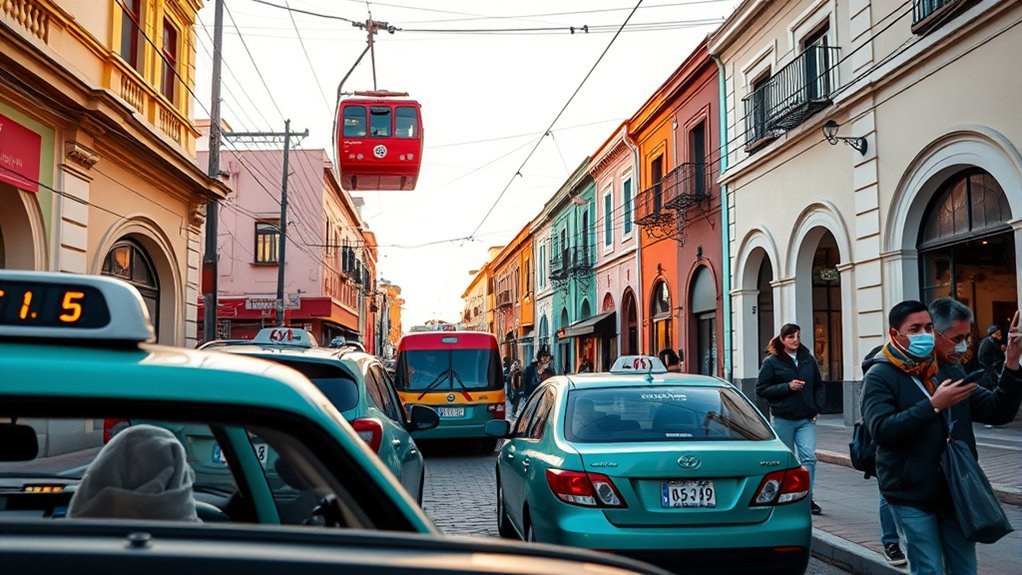
Although public transport fares are low, you should weigh options carefully: local bus or minibus rides typically cost $0.30–$1, short taxi trips run $2–$5, and rideshare apps like Uber compete with taxis in major cities.
Car owners should budget roughly $50–$100 monthly for fuel and factor in costs for prepaid mobile plans (local calls are generally inexpensive, especially with bundles) when comparing total transport-plus-communication expenses.
For routine commuting, transportation costs favor buses/minibuses for affordability; taxis and rideshares add time savings but multiply daily spending.
If you drive, compare fuel and occasional parking or maintenance with cumulative taxi costs for similar trip frequencies.
For communication, a prepaid plan priced per minute pushes you to prioritize data-based messaging and calls over voice minutes when possible.
Combine typical monthly transport outlays with expected call minutes to model your budget: low public-transit usage keeps costs under $30, mixed taxi/rideshare patterns reach $50–$150, and car ownership plus modest calling can approach $100–$200 depending on usage.
Healthcare, Insurance, and Personal Care Expenses

Moving from transport and comms budgets, you should also factor routine health and grooming costs into monthly calculations: a GP visit runs about $10–$30 while specialists are typically $30–$80, and common prescriptions usually cost $5–$15, so out-of-pocket care remains affordable for most residents and expats. You’ll find private clinics favored by expats for perceived higher quality, though public options cut costs. Private health insurance ranges roughly $50–$200/month, so compare premiums to expected out-of-pocket use.
| Service | Typical Cost |
|---|---|
| GP visit | $10–$30 |
| Specialist | $30–$80 |
| Prescription | $5–$15 |
| Private insurance | $50–$200/mo |
When planning, weigh annual visit frequency against insurance tiers: low-use individuals may pay more in premiums than in direct fees, while those needing regular specialist care often benefit from insurance. Include routine personal care expenses—haircuts, toiletries—in your monthly healthcare and personal care expenses forecast.
Money-Saving Tips and Local Budgeting Advice
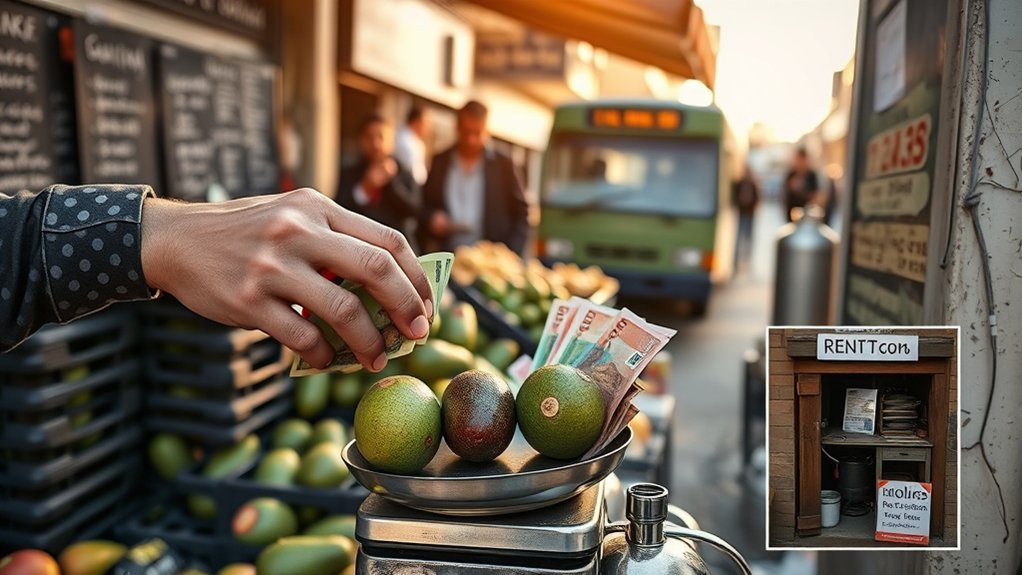
How can you stretch your boliviano without sacrificing comfort?
Cook at home — a single person can keep groceries to $100–300 monthly by buying staples like milk ($1–2/L) and eggs ($2–3/dozen) at local markets.
Cook at home — single-person groceries can run $100–300 monthly by buying staples like milk and eggs at markets.
Compare weekly market prices to supermarket promotions and freeze bulk buys to extend value.
Use street food and occasional mid-range restaurants strategically: $1–2 street meals beat $15–30 restaurant tabs when you need convenience.
Prioritize public transport: local buses cost $0.30–1 per ride and monthly tickets (often around $25–$40) beat frequent taxi use.
Trim utilities by monitoring electricity ($15–40/month) and water ($5–10/month): choose energy-efficient bulbs, unplug idle devices, and limit high-consumption appliances.
For longer stays, negotiate rent or join flatshares to lower per-person housing costs.
Track spending weekly with a simple budget spreadsheet, set clear limits for dining and transport, and reallocate savings to local health insurance or emergency funds.
Small, regular adjustments keep living standards high while cutting costs.
Frequently Asked Questions
Is Bolivia a Cheap Place to Live?
Yes — you’ll find Bolivia cheap compared with many countries. Cost comparison shows monthly living around $708, with lower rents, inexpensive food and transport; you’ll spend far less than in most Western or regional urban centers.
Can a US Citizen Retire in Bolivia?
Yes — you can retire in Bolivia, and you’ll find favorable Retirement Benefits; you’ll compare lower living costs ($600–$1,550 monthly), enjoy cheaper utilities, and stretch U.S. income far more than in many other countries.
Is Bolivia a Good Place for Americans to Live?
Yes — you’ll find Bolivia affordable and comparable to many Latin American options; you’ll manage low rents, cheap groceries, accessible healthcare, but prioritize Cultural Adaptation, adjusting to language, bureaucracy, altitude, and differing infrastructure for comfortable living.
What Is the Average Rent in Bolivia?
You’ll find average rent prices around $349 monthly for a one-bedroom in city centers, with cheaper options near $229 and major-city ranges $300–$700, while three-bedroom apartments in smaller or less central areas often start around $250–$300.
Conclusion
Living in Bolivia can feel like tending a small, lively garden: you’ll plant modest rent and grocery seeds, water them with cheap transport and local markets, and watch a comfortable life grow for far less than in neighboring countries. Compared to pricier cities, your budget stretches—single or family, you’ll choose where to splurge on private healthcare or dining out. With careful tending, your expenses will bloom into reliable, affordable living.

